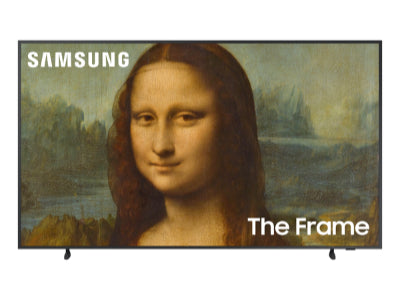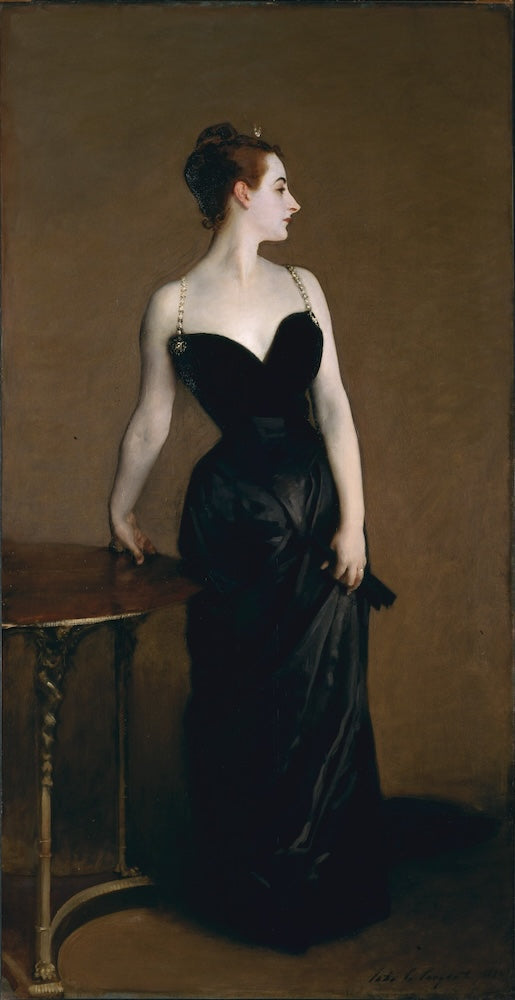The art of portraiture is about more than just a paint-based snapshot of people who were able to sit still for long periods of time. It's an art form that captures the essence of a person. It reveals their personality, their status, and even their soul.
Unlike casual sketches or candid photos of the modern era, portraits are representations that often have deep symbolic meaning. They're windows into different eras that showcase not only the subject but the fashions, artistic styles, and cultural values of the time they were painted.
Portraiture has evolved from formal depictions of royalty and nobility to more intimate experimentations of artists, writers, and everyday people. They often blur the line between reality and idealization, challenging us to look beyond the surface appearances.
Let's look at five paintings that will give us unique insights into the artists' techniques, the subjects' character, and the context of art history.
1. "Portrait of Simonetta Vespucci" by Piero di Cosimo (c. 1485)
Google "portrait of Simonetta Vespucci," and you'll realize that's not such an easy search. There are several portraits of Simonetta Vespucci, and most of them were done by Sandro Botticelli.
There are at least five paintings titled "Portrait of Simonetta Vespucci." There's the one where she's wearing a white dress, in profile, and looking to the right. There's the one where she's wearing the red dress and looking to the right. There's the red dress, looking to the left. Green dress, looking to the left. Oh, and let's not forget that many art historians speculate that Simonetta was also the inspiration for Botticelli's most famous painting, "The Birth of Venus."
And then there's Piero di Cosimo’s "Portrait of Simonetta Vespucci." If you Google "portrait of Simonetta Vespucci," you'll be overwhelmed with Botticelli's version and have to look hard to find di Cosimo's. (Which is why I'm featuring it here.) If di Cosimo had understood search engine optimization a little better, he would have painted five paintings of Vespucci, and we would know his versions even more.
Vespucci is often considered a muse to more than one Italian artist, and di Cosimo was certainly captivated by her, although she died when di Cosimo was only 14. There is some speculation that di Cosimo may have been inspired by earlier paintings of the Florence beauty.
In this painting, she's portrayed as Cleopatra from the stomach up. There is a small snake entwined around her necklace; she is topless except for a richly embroidered cloth around her shoulders; and her hair is done up in the fashionable style of the time (which also looks a little serpentine). There are dark clouds over a body of water, and Vespucci is gazing off to the left. At the base of the painting is a border that looks like engraved letters that read "SIMONETTA IANUENSIS VESPUCCIA."
Others believe that the serpent — believed to be an asp — is symbolic of Cleopatra, and it hints at both healing and mortality. This may be a symbol of Vespucci's own death from tuberculosis when she was 22.

2. "Portrait of Madame X" by John Singer Sargent (1884)
Is it a little black dress if it goes all the way to the floor? Or is it a little black evening gown?
Regardless, John Singer Sargent’s Portrait of Madame X caused quite the uproar when Madame X was shown wearing a black gown with jeweled straps. Virginie Gautreau, the so-called Madame X, posed in the black gown, originally shown with one strap slipping off her shoulder. This shocked the nation, which gave us the Moulin Rouge and Cancan dancers, and it hurt both Sargent's and Gautreau's reputations. (Sargent later repainted the strap on Gautreau's shoulder, making it look more secure and less scandalous.)
Not that it mattered to Gautreau: She was already a wealthy socialite — an American French Creole immigrant — who had married a banker twice her age and was rumored to have had numerous affairs. She was often referred to as a "professional beauty," which meant she used her personal skills and looks to advance herself socially.
The painting itself contrasts Gautreau's lily-white skin as it announces itself against the deep black of her dress and the muted brown background. Just like a recent post on chiaroscuro — the dramatic use of light and shadow — it's almost like Sargent used the dark backgrounds in order to show off Gautreau's pale beauty.
Despite the initial controversy — one art critic wrote, "All the women jeer. Ah voilà 'la belle!' 'Oh quelle horreur!' [Ah, here is 'the beauty'!' 'Oh how horrible!'] etc." — Madame X is now celebrated as it shows Sargent's ability to blend realism with drama and features Virginie Gautreau as the beauty who had enjoyed a certain reputation and notoriety in French high society.

3. "The Postman Joseph Roulin" by Vincent Van Gogh (1888 – 1889)
Dutch artist Vincent Van Gogh is known for his landscapes, so it's noteworthy that he painted 26 portraits in total of the Roulin family the postman Joseph Roulin, his wife Augustine, and their three children, Armand, Camille, and Marcelle.
It's considered one of Van Gogh's most heartfelt and innovative achievements in portraiture, partly because their willingness to sit for him was a rare gift. Van Gogh often struggled to find willing models for his portraits, so their willingness to sit so often gave him a sense of belonging and emotional support during a troubled period in his life.
Roulin and Van Gogh often drank together in one of the little taverns in Arles, France, where Roulin served as the postman of the Arles train station. Marie Ginoux, the owner of the cafe where they drank together, said the two were "like brothers." It was Roulin who wrote to Vincent's brother Theo, paid Vincent's rent, and made sure he received treatment at a psychiatric hospital after the artist cut off his left ear.
Rather than aiming for the realism of most other portrait artists, he brought his use of bold, expressive colors and swirling brushstrokes to evoke the personalities of his sitters. Joseph is often portrayed in his blue postman's uniform and long, full beard.
Van Gogh saw the Roulins as embodiments of working-class dignity and republican values, which were ideas he respected. Through his vibrant colors and energetic brushwork, Van Gogh tried to capture"that something of the eternal" by making the ordinary extraordinary.
The 26 paintings are a timeless tribute to friendship and the security of family and belonging, something that eluded the artist for most of his life.

4. "Portrait of Adele Bloch-Bauer I" by Gustav Klimt (1907)
There are a couple of historical connections to Klimt's "Portrait of Adele Bloch-Bauer I." (Which does mean that yes, there is another portrait of Adele Bloch-Bauer.) Not to mention the (possibly romantic) connection between Klimt and Bloch-Bauer.
First, Klimt's shimmering masterpiece is from his "Golden Phase," and once you see this one, you'll think, "It looks like 'The Kiss.'" The portrait was commissioned by Adele's wealthy husband, Ferdinand Bloch, who was a banker and sugar manufacturer. Klimt elevated Bloch-Bauer to near-divine status through his use of gold leaf and intricate patterns that were inspired by Byzantine mosaics.
She's enveloped in gold splendor as her figure blends into the geometric background. Her bare shoulders add an air of sensuality — remember the uproar John Singer Sargent created with a drooping dress strap 23 years earlier? — even as she gazes out at the viewer, lids heavy, hands together. Is she worried? Bored? In love?
The second bit of history is that Bloch-Bauer was also Klimt's model for his portrait, Judith and the Head of Holofernes, a painting by Artemisia Gentileschi that we discussed in another article on chiaroscuro.
It's a famous subject as the Old Testament story of the biblical tale of Judith, who seduced and decapitated General Holofernes, in order to save her home city of Bethulia from the Assyrian army. (In fact, there are 16 portraits of this tale created between 1460 and 1901, the final one being Klimt's.)
There is speculation that Klimt and Bloch-Bauer were having an affair, although most people believe they were only friends. However, one Klimt author noted that some of the preliminary sketches Klimt made for The Kiss were "an idealized portrait of Adele."
Regardless of their relationship, Klimt does a wonderful job of celebrating Bloch-Bauer's beauty as he surrounds her with gold and imagery.

5. "Portrait of Gertrude Stein" by Pablo Picasso (1906)
Picasso is known for many of his works — The Old Guitarist, Guernica, Don Quixote, Le Rêve — so you may be surprised to learn that he painted more traditional portraits as well. His "Portrait of Gertrude Stein" was a turning point in his career, foreshadowing his creation of the Cubist movement and innovations.
Stein was an American writer and art patron living in Paris, and she was instrumental in supporting modern art movements and their artists. Picasso worked on this portrait for many months, working and reworking Stein's face until it resembled a mask. In fact, the creation required anywhere from 80 to 90 sittings. After a summer break in Spain, he completed the portrait from memory, which created a contrast between her mask-like face and the more naturalistic rendering of her body.
Her face draws on the influence of Iberian and African art, as seen in its simplified geometric planes and heavy-lidded eyes. This kind of abstraction breaks from portraiture's traditional focus of realistic likeness, instead emphasizing a psychological depth and presence.
Stein is a large, imposing figure, leaning forward with an almost monumental expression. She looks somber and introspective, as Picasso lets us see her inner essence over her surface appearance.
This portrait immortalized Stein's identity, and she saw it as her true representation. She thought it linked her literary revolution with Picasso's artistic breakthrough — the close relationship between literary and visual modernism. The painting heralded the dawn of Cubism and reshaped the possibilities of portraiture in the 20th century.
As the story goes, when Stein said she didn't recognize herself in the painting, Picasso is said to have replied that she would come to resemble it — his belief that art shapes perception as much as it reflects reality.

Display Your Personal Gallery of Masterworks with Art Mode
Now you can enjoy viewing these and many other beautiful images on your Samsung Frame TV with the Art Mode feature. When not in use as the central hub for watching movies, enjoying your favorite television shows, and gaming, the television is transformed from a large black void on your wall into the centerpiece of any room, displaying digital artwork reproductions of the most visually stunning art pieces from the world's most renowned artists.
Whether you favor impressionism, expressionism, cubism, minimalism, realism, surrealism, or anything in between, you can choose from the thousands of images available in the Samsung Art Store. The Art Store is available to all Samsung television owners with a subscription and includes an impressive collection of free art available without signing up.
Select Art Mode for Your Collection, Your Way
The Art Mode settings are easy to access on your TV remote or through the SmartThings App on your mobile device. Each method allows you to adjust the brightness, color tone, even the sensitivity of the sensor that triggers the Art Mode capability on your TV screen. These controls also provide the ability to upload your own photos to be displayed in full screen and as a slideshow on your Frame TV.
Turn Your Television into a Painting...or Many Paintings.
Over the centuries, artists have used their craft to capture appearances as well as deeper truths about identity, emotion, and culture. Each of these works reminds us why portraiture is one of art's most enduring genres.
Through the eyes of these master painters, you can see how a single image can convey volumes about a person's character, social standing, and inner world. Something greater than the world's greatest camera could ever do.
These and other portraits are more than just paintings in museums or art books. They challenge us to appreciate the complexity of every individual and the mass of emotions and life events that brought them to that place, to sit in front of the artist, and expose themselves to the world. And Samsung The Frame TV lets you take in their beauty any time in any room of your home.
Every Masterpiece Needs the Perfect Frame
The portraits you choose to display on your Samsung Frame TV need That Finishing Touch and Deco TV Frames has a wide selection of styles, colors, textures, and sizes that will fit your home decor and your favorite Samsung television. Art gallery curators take great care and consideration into the frames that adorn the works in their collections, your home shouldn't be any different.
Browse our catalog and look through the different collections we offer, all of them beautiful, easy to assemble and install, and all Deco TV Frames are made right here in the United States of America. We're sure you will find the perfect frame for your home, your office, wherever you want to make your Samsung The Frame television the compelling centerpiece of your space.
![]()












